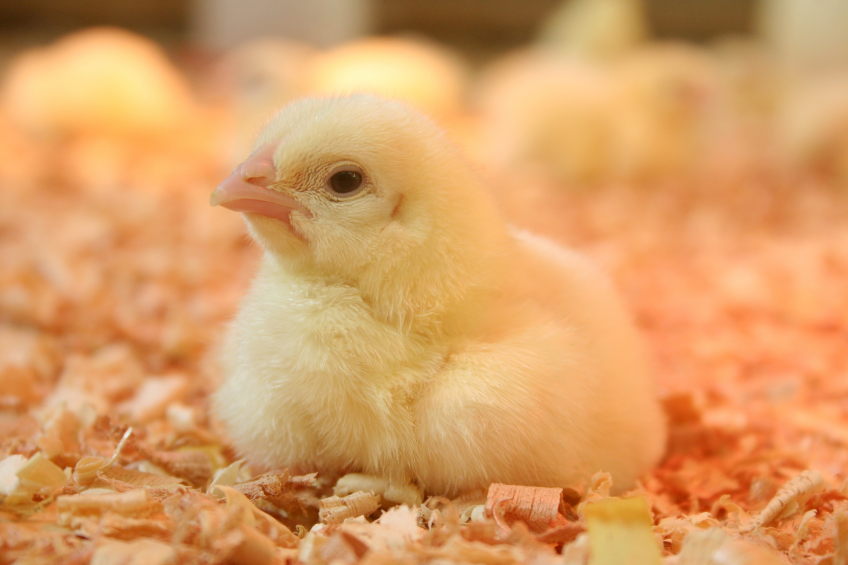Controlling ammonia emissions from poultry houses

Ammonia in poultry houses is a major concern for the industry, due to environmental and bird welfare issues. So new discoveries in how to the reduce these emissions is very welcome, such as the research at the University of Delaware.
poultry litter, prior to the birds entering the house, reduces ammonia and greenhouse gas concentrations and emissions, specifically carbon dioxide, in poultry houses.
Controlling nutrient emissions from poultry houses
Li, assistant professor in the Department of Animal and Food Sciences (ANFS) in UD’s College of Agriculture and Natural Resources, said that the project is ongoing and that the main challenge for the poultry industry is controlling nutrient emissions from poultry houses and conserving energy while also providing for the welfare of the birds inside the houses.
“In the poultry industry, ammonia is a major concern. Ammonia during the growth period is high, especially during the wintertime. Ammonia can do a lot of damage to the animal, especially the respiratory system, and can effect overall animal health and welfare,” said Li.
Also, if ammonia is emitted to the air from the poultry house, it is a precursor of fine particles and there are national Clean Air Act regulations from the Environmental Protection Agency that have strict guidelines for controlling emissions.
“We need to control the ammonia, not only for the animal health but also for the public health. That’s why I’m doing the research, to reduce the ammonia emissions and improve the animal health and the public air quality, especially for the rural areas, to make sure our agriculture is sustainable,” said Li.
Also interesting:
Litter management – Part 1 & 2
Good litter for healthy birds
Litter condition strongly depends on good management
Alum preferred by poultry producers
Li said that there are several products on the market to control ammonia in poultry houses and alum is the preferred product for growers in Arkansas, where the study was conducted. While adding alum to poultry litter is known to reduce ammonia concentration in poultry houses, its effects on greenhouse gas emissions had been unknown.
Li partnered with researchers at the United States Department of Agriculture (USDA), the University of Tennessee and Oklahoma State University for the project and the results of the research were recently published in the Journal of Environmental Quality.
Li’s role in the study was on the engineering side and he helped Philip Moore, one of the authors of the paper and a pioneer researcher on alum in poultry production with the USDA, develop an automatic air sampling system to evaluate the emissions reduction by using alum in the broiler house.
Reduced carbon dioxide emissions
“We not only looked at ammonia reduction, we also looked at the whole environmental footprint — how the alum could potentially impact the greenhouse emissions — and the results showed that we reduced quite a bit of carbon dioxide emissions,” said Li.
The carbon dioxide was reduced in two ways. First, because alum is an acidic product, it reduces microbial activity in the litter and reduces the ammonia emissions. Ammonia comes from uric acid being broken down by bacteria and enzymes. Once the uric acid is broken down, 2 products are created — ammonia and carbon dioxide.
“By reducing the bacterial activity, we reduce ammonia and also we reduce the carbon dioxide; that’s one aspect of how we reduce carbon dioxide,” said Li.
Second, by using acid-based litter amendments in poultry litter, growers can reduce the ventilation rate and reduce fuel used for heating the poultry houses, especially during the winter.
Improving animal health and welfare
“In the broiler industry, we want to control ammonia to improve animal health and welfare. They have to keep the bird comfortable with optimum temperatures. However, if you want to have lower ammonia, you have to bring in more fresh air, remove more of the ammonia-laden air. As a result, you have to over ventilate the house,” Li said.
“That means you have to burn more fuel to keep the house warm. By using the acid-based litter amendments, we can reduce the ventilation rate and the fuel use, which reduces the carbon dioxide emission from the house through the heating process. Basically, if we reduce the microbial activity and also reduce the heating, we can generate lower carbon dioxide emissions.”
Source: Science Daily
Join 31,000+ subscribers
Subscribe to our newsletter to stay updated about all the need-to-know content in the poultry sector, three times a week. Beheer
Beheer








 WP Admin
WP Admin  Bewerk bericht
Bewerk bericht